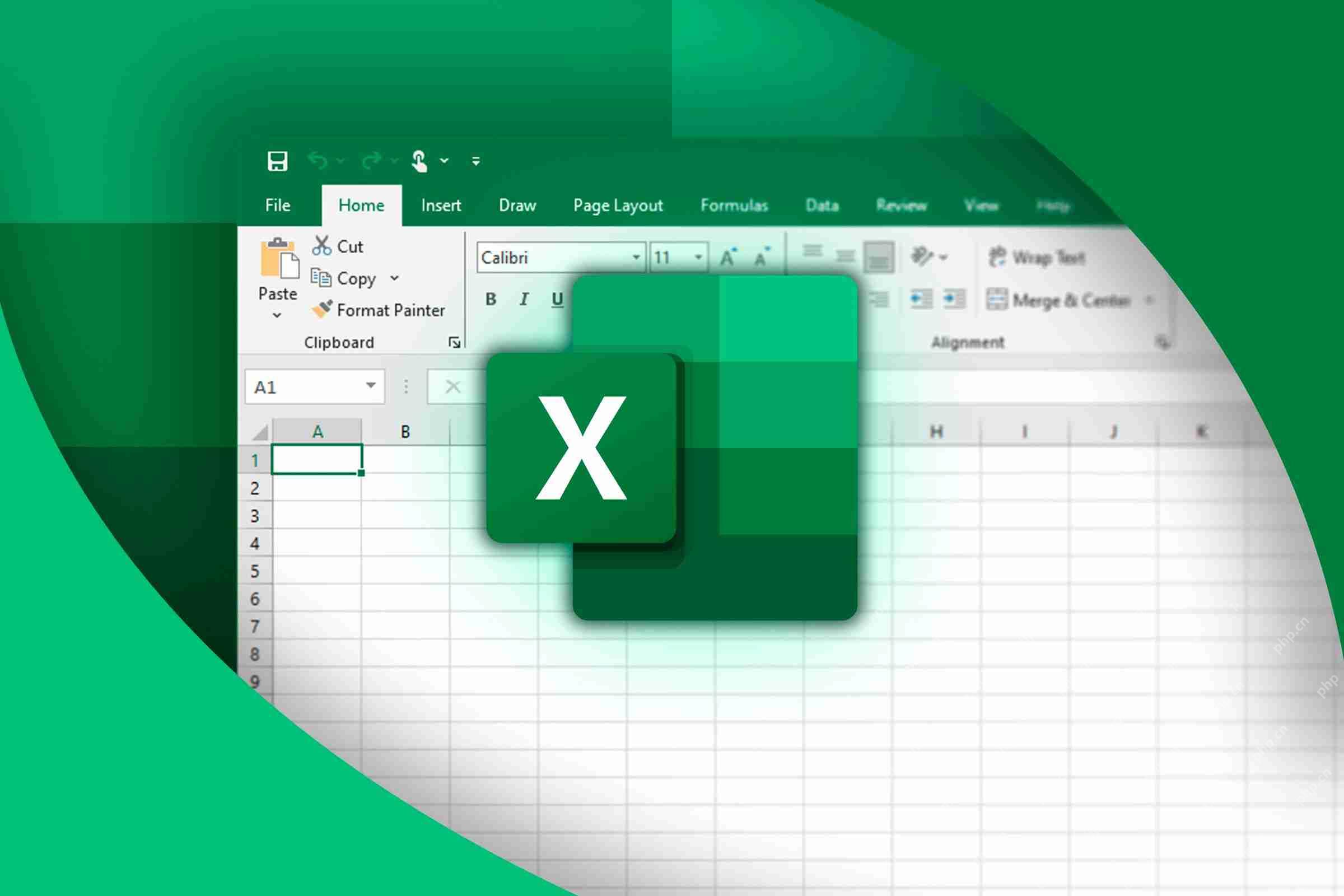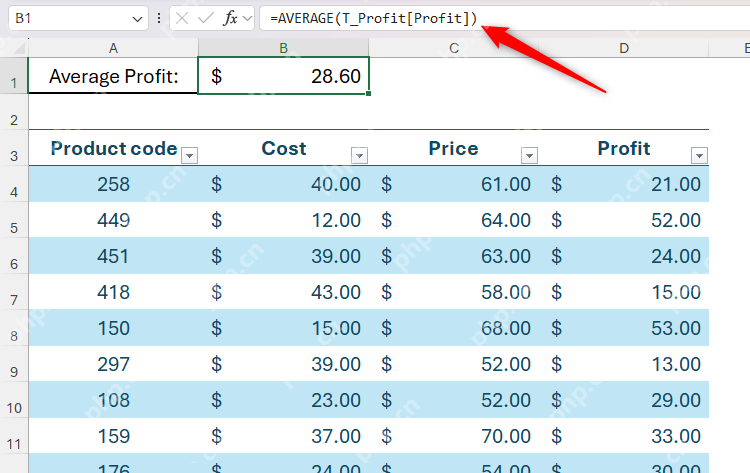 Software Tutorial
Software Tutorial
 Office Software
Office Software
 If You Don't Rename Tables in Excel, Today's the Day to Start
If You Don't Rename Tables in Excel, Today's the Day to Start
If You Don't Rename Tables in Excel, Today's the Day to Start
Quick link
- Why should tables be named in Excel
- How to name a table in Excel
- Excel table naming rules and techniques
By default, tables in Excel are named Table1, Table2, Table3, and so on. However, you don't have to stick to these tags. In fact, it would be better if you don't! In this quick guide, I will explain why you should always rename tables in Excel and show you how to do this.
Why should tables be named in Excel
While it may take some time to develop the habit of naming tables in Excel (if you don't usually do this), the following reasons indicate that today should start.
First, if you are working on a large workbook with multiple tables, you can quickly navigate from one table to another by clicking the down arrow in the Name box (located in the upper left corner of the Excel window) - no matter which worksheet they are located in. If you do not name the table, this drop-down list will display the default Table numeric table name, which means you cannot take advantage of this time-saving trick.


Related ##### Excel forms do not support bookmarks (so please use this trick)
Excel has its own bookmark type functionality.
Second, descriptive table names make it easier for people using screen readers to understand what each table contains.
Third, formulas containing references to renamed tables are easier to understand and debug than formulas that reference default table names. For example, quoting T_Profit[Profit] in a formula is more contextual than quoting Table1[Profit], and if the calculation seems to be incorrect, you know where to fix any issues. More importantly, referencing table names in formulas reduces the possibility of accidentally referencing wrong cells or ranges.


Related###### Everything about structured references in Excel
Use table and column names instead of cell references.
At the end of , many Excel tools, such as pivot tables and charts, work effectively using table names, so assigning these tags to the data will improve the overall performance of the worksheet.
How to name a table in Excel
If this is your first time naming a table in Excel, you'll be surprised at how simple the process is.
The first step is to make sure your data has been formatted as an Excel table. In other words, while you can put numbers into a spreadsheet and leave the data as is, Excel has a tool that allows you to link these cells together as a grouping range.
Select any cell in the range you want to convert to a table, and on the Ribbon, on the Start tab, click Format as Table, and select the design that suits you.
Excel Table Naming Rules and Tips Before you continue to rename Excel tables, please note the following naming rules and tips:
- The table name must begin with a letter, an underscore (_) or a backslash ().
- The remaining characters in the table name must be letters, numbers, periods, or underscores.
- Tables cannot be named "C", "c", "R" or "r".
- The table name cannot be a cell reference, such as A1 or $B$2.
- Each table name in the workbook must be unique.
- Keep the table names as short as possible while making sure they clearly define what the table contains. Table names can contain up to 255 characters, but if you are worried about this, your table names must be too long!
- Table names cannot contain spaces. If the table name consists of multiple words, separate the words with an underscore or period.
- To distinguish my table from the name box and other elements in the name manager, I usually start with "T_".
In addition to naming tables in Excel, another way to make spreadsheets easier to navigate and make formulas easier to read is to name individual cells or ranges of cells. This is especially useful if there are cells or ranges of cells in the workbook that you or others know will be used and accessed frequently.
The above is the detailed content of If You Don't Rename Tables in Excel, Today's the Day to Start. For more information, please follow other related articles on the PHP Chinese website!

Hot AI Tools

Undresser.AI Undress
AI-powered app for creating realistic nude photos

AI Clothes Remover
Online AI tool for removing clothes from photos.

Undress AI Tool
Undress images for free

Clothoff.io
AI clothes remover

Video Face Swap
Swap faces in any video effortlessly with our completely free AI face swap tool!

Hot Article

Hot Tools

Notepad++7.3.1
Easy-to-use and free code editor

SublimeText3 Chinese version
Chinese version, very easy to use

Zend Studio 13.0.1
Powerful PHP integrated development environment

Dreamweaver CS6
Visual web development tools

SublimeText3 Mac version
God-level code editing software (SublimeText3)

Hot Topics
 How to Create a Timeline Filter in Excel
Apr 03, 2025 am 03:51 AM
How to Create a Timeline Filter in Excel
Apr 03, 2025 am 03:51 AM
In Excel, using the timeline filter can display data by time period more efficiently, which is more convenient than using the filter button. The Timeline is a dynamic filtering option that allows you to quickly display data for a single date, month, quarter, or year. Step 1: Convert data to pivot table First, convert the original Excel data into a pivot table. Select any cell in the data table (formatted or not) and click PivotTable on the Insert tab of the ribbon. Related: How to Create Pivot Tables in Microsoft Excel Don't be intimidated by the pivot table! We will teach you basic skills that you can master in minutes. Related Articles In the dialog box, make sure the entire data range is selected (
 If You Don't Use Excel's Hidden Camera Tool, You're Missing a Trick
Mar 25, 2025 am 02:48 AM
If You Don't Use Excel's Hidden Camera Tool, You're Missing a Trick
Mar 25, 2025 am 02:48 AM
Quick Links Why Use the Camera Tool?
 You Need to Know What the Hash Sign Does in Excel Formulas
Apr 08, 2025 am 12:55 AM
You Need to Know What the Hash Sign Does in Excel Formulas
Apr 08, 2025 am 12:55 AM
Excel Overflow Range Operator (#) enables formulas to be automatically adjusted to accommodate changes in overflow range size. This feature is only available for Microsoft 365 Excel for Windows or Mac. Common functions such as UNIQUE, COUNTIF, and SORTBY can be used in conjunction with overflow range operators to generate dynamic sortable lists. The pound sign (#) in the Excel formula is also called the overflow range operator, which instructs the program to consider all results in the overflow range. Therefore, even if the overflow range increases or decreases, the formula containing # will automatically reflect this change. How to list and sort unique values in Microsoft Excel
 Use the PERCENTOF Function to Simplify Percentage Calculations in Excel
Mar 27, 2025 am 03:03 AM
Use the PERCENTOF Function to Simplify Percentage Calculations in Excel
Mar 27, 2025 am 03:03 AM
Excel's PERCENTOF function: Easily calculate the proportion of data subsets Excel's PERCENTOF function can quickly calculate the proportion of data subsets in the entire data set, avoiding the hassle of creating complex formulas. PERCENTOF function syntax The PERCENTOF function has two parameters: =PERCENTOF(a,b) in: a (required) is a subset of data that forms part of the entire data set; b (required) is the entire dataset. In other words, the PERCENTOF function calculates the percentage of the subset a to the total dataset b. Calculate the proportion of individual values using PERCENTOF The easiest way to use the PERCENTOF function is to calculate the single
 If You Don't Rename Tables in Excel, Today's the Day to Start
Apr 15, 2025 am 12:58 AM
If You Don't Rename Tables in Excel, Today's the Day to Start
Apr 15, 2025 am 12:58 AM
Quick link Why should tables be named in Excel How to name a table in Excel Excel table naming rules and techniques By default, tables in Excel are named Table1, Table2, Table3, and so on. However, you don't have to stick to these tags. In fact, it would be better if you don't! In this quick guide, I will explain why you should always rename tables in Excel and show you how to do this. Why should tables be named in Excel While it may take some time to develop the habit of naming tables in Excel (if you don't usually do this), the following reasons illustrate today
 How to Format a Spilled Array in Excel
Apr 10, 2025 pm 12:01 PM
How to Format a Spilled Array in Excel
Apr 10, 2025 pm 12:01 PM
Use formula conditional formatting to handle overflow arrays in Excel Direct formatting of overflow arrays in Excel can cause problems, especially when the data shape or size changes. Formula-based conditional formatting rules allow automatic formatting to be adjusted when data parameters change. Adding a dollar sign ($) before a column reference applies a rule to all rows in the data. In Excel, you can apply direct formatting to the values or background of a cell to make the spreadsheet easier to read. However, when an Excel formula returns a set of values (called overflow arrays), applying direct formatting will cause problems if the size or shape of the data changes. Suppose you have this spreadsheet with overflow results from the PIVOTBY formula,
 How to Use Excel's AGGREGATE Function to Refine Calculations
Apr 12, 2025 am 12:54 AM
How to Use Excel's AGGREGATE Function to Refine Calculations
Apr 12, 2025 am 12:54 AM
Quick Links The AGGREGATE Syntax






